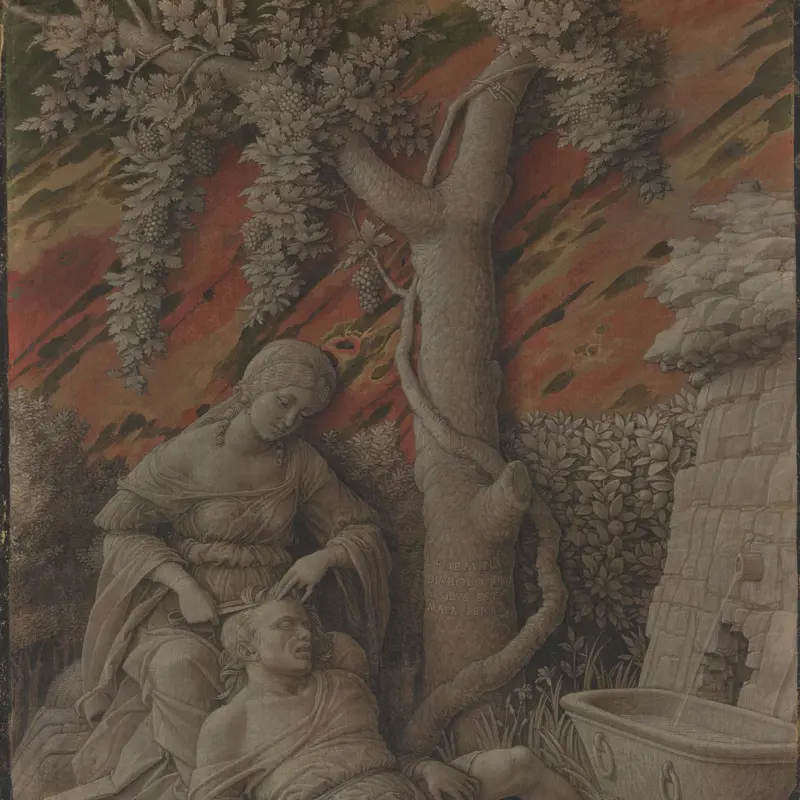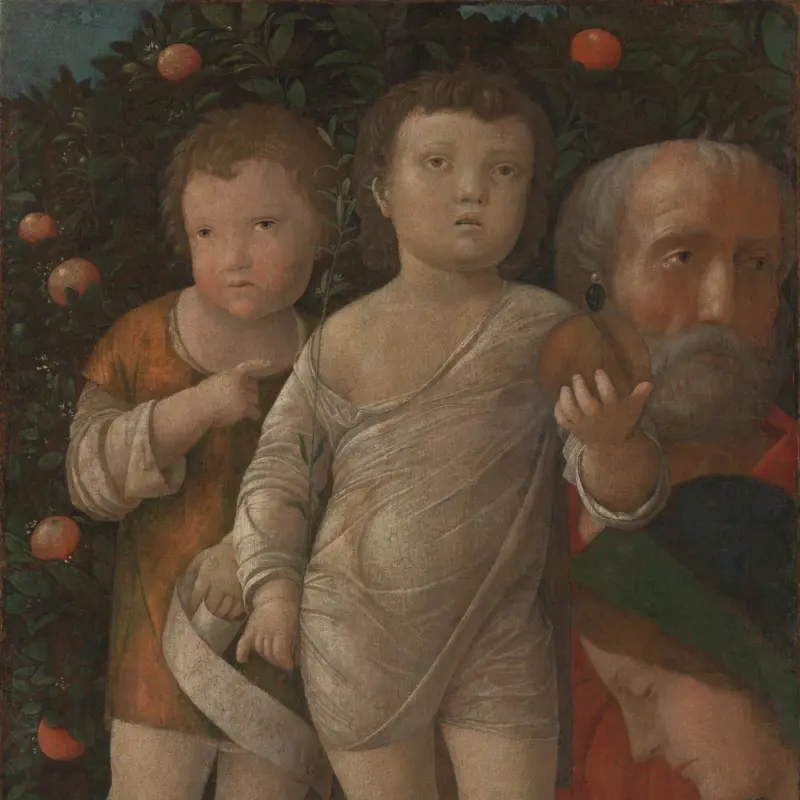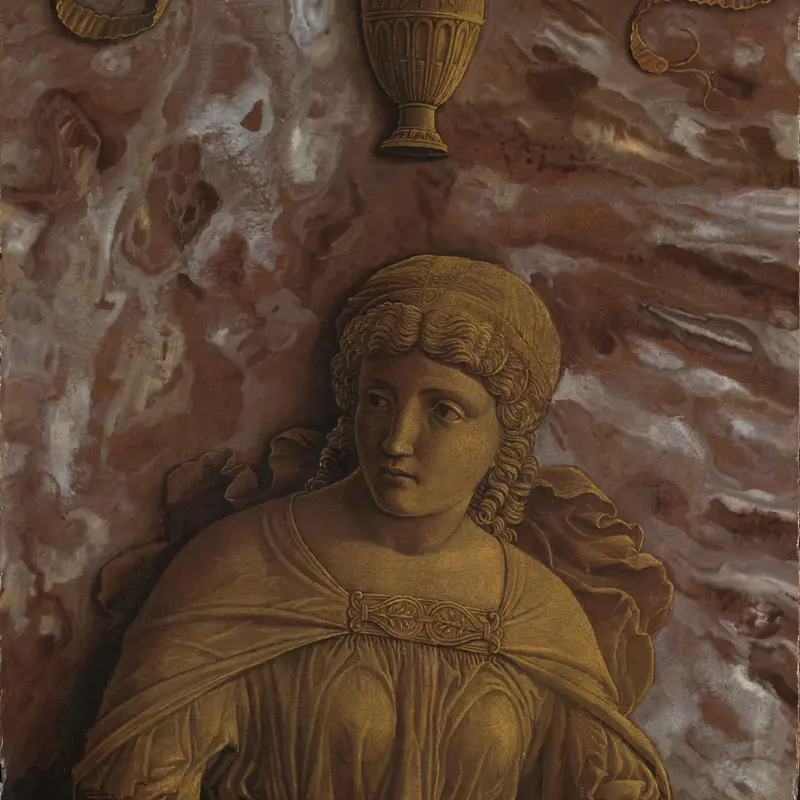Mantegna was born near Padua and worked for local artist Squarcione. Believing his talents were being exploited, the ambitious young artist broke their agreement and in 1453 married into the rival Venetian firm of the Bellinis. Mantegna's early style is represented by the 'Agony in the Garden'.
His first important commission came in 1448, painting frescoes for the Eremitani Chapel in Padua. He worked in Padua, Verona and Venice before moving to Mantua in 1460, where he spent the rest of his life. The great paintings by Mantegna in the Gallery date from his years in Mantua as court artist to the Gonzaga.
His scholarly interest in the antique drew him into friendship with humanist scholars like Felice Feliciano. In 1464 they dressed up as Romans for a boating excursion on Lake Garda. In the 'Triumphs of Caesar' Mantegna indulged his interest in antique art, which can also be seen in the Gallery's 'Cult of Cybele'. He developed a painting technique which enabled him to imitate the look of classical sculpture. Mantegna produced engravings which helped spread his designs and fame beyond Italy. From possibly humble origins Mantegna rose to become a valued retainer of the Gonzaga. He was knighted by 1484, a rare honour for an artist.
















